…The first after the de-occupation of Lyman (Donetsk region) issue of the local newspaper Zoria, dated October 27, 2022, was delivered to the town residents and to a significant part of the 40 settlements of the community along with humanitarian aid.
“The previous issue was dated April 2. That is, Lyman was without a newspaper for almost 7 months,” says Oleksandr Pasichnyk, editor-in-chief of Zoria.
He, his wife Anzhelika, and his seriously ill father-in-law had to flee their hometown in early April with only two bags of belongings.
“When the active stage of the war began, we barely escaped,” says Oleksandr Anatoliyovych, “The front quickly reached the outskirts of Lyman. Terrible shelling began. At best, we had to sleep in the corridor, at worst – in the basement. Sometimes we hid in garages. The shelling shattered Lyman to pieces. There is not a single intact house left… Unless, perhaps, there are some in the private sector. My father-in-law bought an apartment just before the war, and now it has been bombed. My apartment was also destroyed. Along with the houses, garages, dachas, and sheds have gone into oblivion. On March 23, I was forced to issue an order to suspend the activities of the Zoria newspaper editorial office for the duration of the war. When we left the city, we didn’t even take our winter clothes. I’m grateful to my classmate for helping me out, for not refusing me, for inviting us to stay at his dacha near Kyiv… Even though we hadn’t seen each other for forty years.”
Before the war, the Lyman-based Zoria, where Oleksandr Pasichnyk had worked for 42 years (8 of them as editor-in-chief), was in good standing in the city. It had regular readers not only in Lyman itself, but also in other towns and villages of Donetsk region. The circulation, as for the local print press, was also quite decent – about three thousand. The team was small (five people) and friendly. In 2020, Zoria celebrated its 90th anniversary. At the time, it seemed that the worst trials (the 52-day occupation under so-called Donetsk People’s Republic, economic turmoil, problems with denationalization) were over… However, an even more terrible and prolonged occupation was ahead.
Oleksandr Pasichnyk left the city, but he never gave up hope of returning to professional journalism. Moreover, the liberation of his native Lyman from the Russian invaders made these hopes come true.
“Objective informing is very important for the community, where normal life has not yet been fully restored,” says the editor, “We thank the National Union of Journalists of Ukraine, especially its President, Sergiy Tomilenko, and foreign donors for funding the newspaper, and the city council and volunteers for distributing it. After the fresh issue of our Zoria appeared in the newly liberated town, the editorial office received a lot of feedback from the readers. Both ordinary residents of Lyman and leaders of enterprises and cultural institutions called. Some of these institutions are now in ruins because of Russian aggression… There were also responses from railroad workers, some of whom are now working in different parts of Ukraine but have not abandoned their ties to their hometown.”
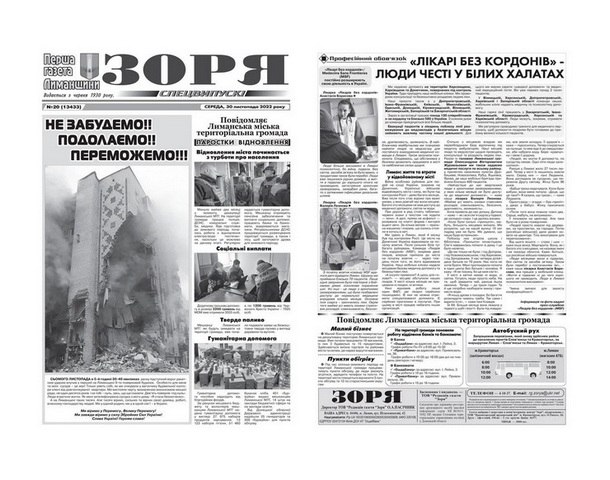
Oleksandr Anatoliyovych particularly remembered the response of the mayor of Lyman, Oleksandr Zhuravlev. “People literally kissed the newspaper, – the mayor said. – They said, ‘Besides necessary food, we would like to read Zorka (diminutive caressing form of Zoria – Editor).’”
Zoria is read not only in the town, but also in the frontline villages of the Lyman community.
“Volodymyr Fesenko, the former deputy mayor of Lyman, lives in the village of Torske near the front line,” the editor says, “The village was bombed to the ground, and it’s a miracle that anyone lives there. Fesenko volunteers on his street, delivering bread to the stayed there people. Along with the bread, he distributes a newspaper.”
“Thank you for the Zoria newspaper, it is read in Torske like a battle sheet,” Volodymyr Petrovych wrote to the Zoria editorial board, “I was there, I took bread and Zoria to the people. There are 29 people on the street, all of whom received the newspaper. So know that Zoria is on the front line! Even soldiers read it and are surprised.”
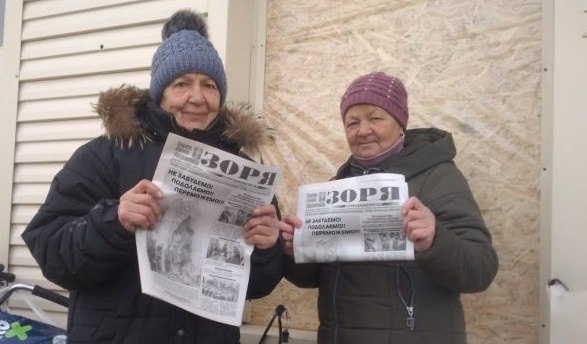
From issue to issue, one of the main topics of Zoria is the fate of the Lyman railroad workers and the issue of reviving the Lyman as a powerful railroad hub.
“We write about railway workers who are at war, who have been captured… And also about those who work in different cities of Ukraine, restoring the railroad after the terrible shelling. About how they help each other,” says Oleksandr Pasichnyk, “The railroaders are our regular readers, and I send each issue to many of them.”
Although the front line is not too far from Lyman, there is already talk of restoring the local railroad junction. Local experts are studying how the repairs will be carried out… and in their spare time, they play soccer on the small reserve field of the Lokomotiv stadium. This is the only field that has survived at this once one of the best stadiums in Donbas…
“It’s very difficult to restore the junction: the occupiers not only destroyed it with shelling, but also stole it. They even removed the rails and took them away,” says Oleksandr Pasichnyk.
Currently, the newspaper is published twice a month, distributed by local self-government bodies and volunteers. Of course, the editor would like readers to subscribe to the newspaper, but Ukrposhta (national postal operator, which, in particular, provides subscriptions to publications throughout the country – Editor) has not yet undertaken to deliver it to readers in the Lyman area. Negotiations are ongoing.
“So far, we have been working mainly due to charitable contributions. We are grateful for the support of the National Union of Journalists of Ukraine, its President Sergiy Tomilenko, the GREEN COOP organization and Japan Offspring Fund, the Academy of Ukrainian Press and the US Embassy. We were reborn and survived. Now we are already getting some advertising, private ads,” says Pasichnyk, “So far, these are small amounts, but it’s good that they have already appeared. As they say, every little helps. This allows us to look to the future with cautious optimism.”
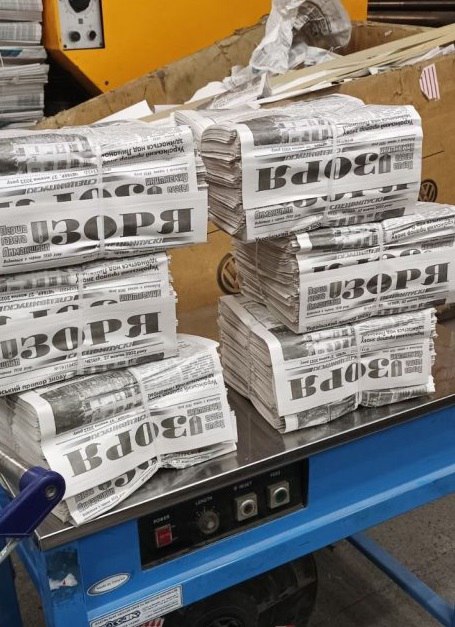
This story about the media was created by the NUJU in the frame of the project «Improving Ukrainian Media Resilience in Ukraine», financed by Swiss Solidarity and implemented with the support of the Swiss non-profit organization Fondation Hirondelle and the Institute for Regional Media and Information (IRMI, Ukraine). Fondation Hirondelle and IRMI implement a project of institutional support for Ukrainian media editorial offices in the east, north and south of our country, with an emphasis on the local press. They also launched a 10-month support program for 18 media.
Economic reference
Zoria newspaper
Distribution area: Lyman (Donetsk Region)
Distribution area: Editor-in-chief: Pasichnyk Oleksandr Anatoliyovych
- Prior to the occupation of the Lyman territorial community, the newspaper Zoria was published twice a week: on Wednesday and Saturday. Between April 02 and October 04, 2022, the publication was suspended. Since October 2022, Zoria has been published as a special issue once or twice a month, reducing the size of the publication from 8 pages to 4.
- The newspaper is distributed free of charge in the Lyman territorial community (the town of Lyman and 49 settlements of the community) by volunteers, employees of the Lyman territorial community during field meetings with community residents, through hubs in Kyiv and Dnipro, to railway workers of the Lyman area who work in Kyiv and Donetsk railways, and to enterprises of the Lyman territory that have moved to different regions of the country with their employees.
- The average circulation of one issue in March 2023 is 3,000 copies.
- Currently, 5 people are working on the newspaper. The editorial staff has partially relocated while a part of the team works at the same place, others work remotely from other regions. The publication is printed in Kyiv.
- The media needs help with relocation. Now Lyman is in the frontline zone. At the moment, the journalists of the editorial office cannot be guaranteed safety of life and work. The editorial office was heavily damaged by shelling and looted.
- The main sources of media funding today are sponsorship from the NUJU and international partners: GREEN COOP and Japan Offspring Fund, the Academy of Ukrainian Press and the US Embassy, Fondation Hirondelle and IRMI.
- In addition to the printed version, the media outlet distributes content on Facebook, Telegram, and Viber. It has significantly expanded the geography of the readership.
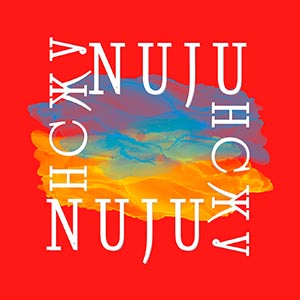
 THE NATIONAL UNION OF
JOURNALISTS OF UKRAINE
THE NATIONAL UNION OF
JOURNALISTS OF UKRAINE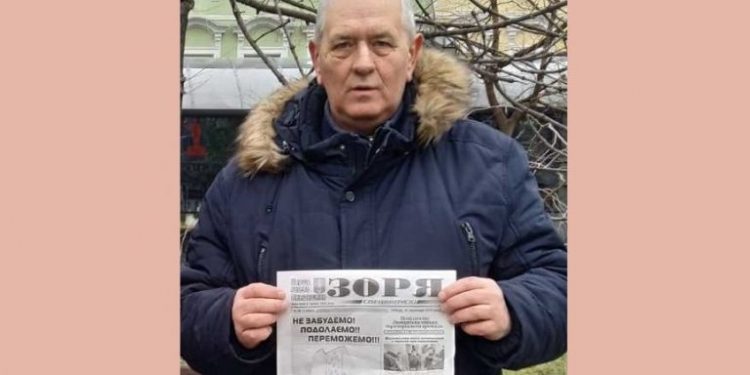

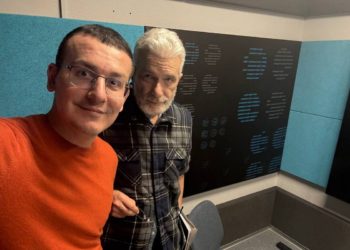
![International Media Organizations: peace plan mustn’t envision amnesty for crimes against journalists 7 Ukrainian flag on Independence Square [Maidan Nezalezhnosti] in Kyiv, Ukraine (archive image). EPA-EFE / Oleh Petrasiuk](https://nuju.org.ua/wp-content/uploads/2025/12/maidan-flag-yezhak-2022-350x250.jpg)
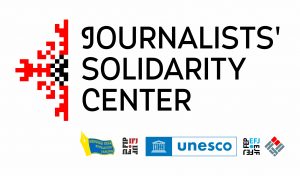



![International Media Organizations: peace plan mustn’t envision amnesty for crimes against journalists 11 Ukrainian flag on Independence Square [Maidan Nezalezhnosti] in Kyiv, Ukraine (archive image). EPA-EFE / Oleh Petrasiuk](https://nuju.org.ua/wp-content/uploads/2025/12/maidan-flag-yezhak-2022-120x86.jpg)




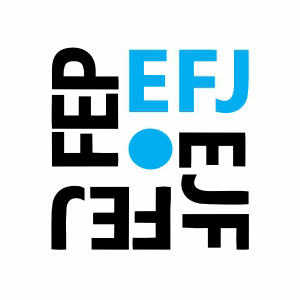



Discussion about this post